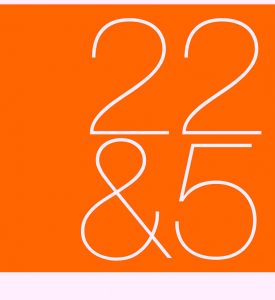
For the best part of three decades the high street has been in a quandary. It didn’t know quite what it was, what it was for, nor what it wanted. Local stores dressed up like branded chains, while branded chain-stores disguised themselves as locals. Little mom and pop newsagents brandished oversized fascias emblazoned with multi national brands so huge they could be read at ease from low flying aircraft, while national chains lovingly placed the town’s name on their fascias, just in case you forgot where you live. Big brands tried to look small and local, while genuinely local stores employed slick designers to dress them up like prototypes poised for global domination.



Some multi-national brands tried to import the flavour of their flagships into the regions by shoehorning the best bits into tiny provincial shoeboxes that were once perfectly respectable local stores with proper shelves and a bell on the door. Our high streets were having an almighty identity crisis…when boom! Covid19 swept in and changed everything.

Literally overnight, everyone could be heard singing the praises of their local heroes: the little stores that kept the lifeblood of the town pumping through its narrow streets. A silent revolution so welcome in some quarters that they declare they saw it coming, that is was inevitable, that something had to change.

The crisis has resurrected the idea of proper service too. Our local heroes stood behind their big, wooden counters and fetched us the things we needed like we were in a Two Ronnies sketch. What’s more, we were happy to wait politely as a sign of our newfound respect for their role in the community. It was as if thousands of high streets, up and down the country, slipped back in time a century or so. Boxes of the things in greatest demand were piled high near the entrance for tap and goers in a hurry and there was no need for a planogram from head office. Staff thanked customers more loudly and with earnest eye contact. Some even grew long beards and wore aprons as if to get into character for their part in this crazy sci-fi movie we call 2020.

Would you believe it? We’re actually enjoying the rebirth of community spirit and relish the new civility the crisis ushered in. Smiles are often broader and more genuine behind the masks than they were without them. Reconnecting with our hometowns has created its own momentum. We hunt down local produce and get excited placing special orders for things at the baker and butcher as if it’s Christmas! We even brag about our love of seasonal produce and joke about our abstinence from imported, blister-packed avocados.

So, do you remember what it was like pre lockdown? Rich, clever brands were developing ways to encourage us to buy things we didn’t need by feeding us little tasters on social media and measuring how many microseconds we’d dwell on their shiny bait. This information was then fed into a giant computer so that they could helicopter in the most ‘liked’ products to the places that most ‘liked’ them. Supermarket chains were developing software to transport us virtually to the birthplace of every product on their shelves. Interspersed with ads, of course. In the tidal wave of consumerism up to the end of last year, this sounded rather exciting. Post Covid it feels irritating and insignificant.

We now know that the tipping point came in March 2020. The shockwaves from switching off the global economy have yet to be fully felt but it’s pretty clear we’ve now embarked on DEVO: A process of de-evolution of our high streets, of brands, the way we trade, and the way we think about retail. The intense heat of business has been burned off: the ridiculous rents, rising rates and the relentless rush for sales to pay them have slammed us hard into a brick wall. The over managed, over designed, over excited retail model that ultimately grew to bore us to death has run its course. How many three storey, back illuminated shoe walls can you see before you crave the simplicity of a pair in a simple cardboard box? How many interactive video screen towers do we install before they become invisible and meaningless? Even the glitziest flagships will switch to Devo mode. I dare say a few video walls are already being dismantled to make way for more reassuring communication like quality of manufacture, or simply creating the breathing space for proper one-to-one service. Simplification is back big time. Even the bizarre and baroque supply chains that over-evolved to bring us the stuff we didn’t need anyway, have strangled themselves lifeless.

Spectacle in retail will not die, of course. Gyrating Gen Alpha Tik-Tokkers will get the spaces they deserve, but big brand boardrooms will no longer echo to the demands for that ever elusive wow factor. Wows were so pre-Covid. We were heading here anyway, the coronavirus just hurried us along. Retail will mature very quickly in the coming months because our values have changed so dramatically. Smart retailers are sure to join us.

The advent of 5G was supposed to be the gateway to an instantly personalised future, so that even the mightiest of megastores would know our name, our cat’s name, and all our personal preferences. But in the post Covid climate who actually wants this sort of fake buddy-ism from the corporate world?
If we work together on this, DEVO can take us back to a gentler, more considered future with a stronger sense of moral purpose. So let’s not get too depressed as we watch our legacy brands in free-fall. They are clearing the way for fresh, young, agile entrepreneurs that will remind us just how beautifully simple retail should be.
Please join me on Twitter @retailfuturist for rants and wry observations















